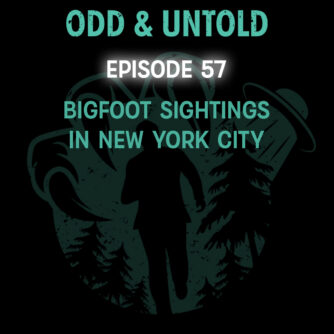I’ve always admired Peter Byrne and his swagger. One of the original Bigfoot hunters, Byrne hasn’t really been mentioned much in the news lately, and I haven’t really seen him on many of the TV shows. I guess he’s been busy actually searching for Sasquatch lately, instead of making the TV rounds. And I say, good for him. I was happy to see that he’s still very active, and thought I’d share this story with you. If you don’t know who Peter Byrne is, check him out.
Peter Byrne has been engaged in what he describes as the “Big Searches” for almost his entire life; his Bigfoot search alone has spanned 50 years.
His first experience was in the 1960s, working in northern California.
Later, he was drawn back to California by the well-known 1967 film made by Roger Patterson and Robert Gimlin outside Orleans, Calif. It is purported to be the most credible evidence of Bigfoot’s existence. While skeptics have dismissed the film, Byrne finds it credible.
“Gimlin is still living in Yakima and he is regarded as a man of great integrity,” Byrne said. “Lots of people have tried to discount it, but it could be real.”
Today, Byrne continues his quest to find Bigfoot.
“I do two things,” he said. “I write. I’ve published 13 books.”
The 13th book is coming out in a few weeks, called “Monster Trilogy,” a three-part guide book on how to find Bigfoot, Yeti and the Loch Ness Monster. He has been in searches for all three.
He also works with a loose-knit group of people on the Oregon Coast, all interested in sighting Bigfoot.
Byrne said in his writings that technology would one day allow the world to verify the existence of Bigfoot and his group uses motion-sensor cameras set up in areas of what Byrne describes as credible sightings in the Coast Range. So far, the cameras have yielded images of other wildlife, but no Bigfoot.
He also researches recent and historical sighting reports. The last credible report from where the researchers were looking was in 2006, Byrne said.
Interest in finding Bigfoot has resurfaced, he said.
“There is tremendous interest — something like 30 websites, lots of letters, but there are no other organized projects at this time,” he said. “There was a group in the Olympic Peninsula, but they were all working guys … and there was a group in Kentucky, but that fizzled out.”
Despite man’s encroachment on the wilderness areas of the Pacific Northwest, Byrne isn’t surprised that the creatures remain largely elusive.
“It’s an enormous area — a huge area,” he said. “There’s an official Federal Aviation Administration figure about planes lost in the Pacific Northwest since World War two. Of 52 planes that crashed, 20 probably went into the ocean, 32 are still not found in British Columbia, Washington, Oregon and Alaska. One has a senator’s body aboard, also representatives from Alaska. The families are still looking for the plane … We’re not talking about Rhode Island. This area is three times the length of the Himalayas.”
Asked why his search for Bigfoot has endured so long, Byrne said, “I’m still fascinated by the possibility of there being an unidentified primate living out there.” Native American history, old records, letters by missionaries and miners, “sightings by thoroughly dependable people,” all support the idea, he said.
And when asked why he thinks others continue to take up the quest, he talked about the last great mysteries of the world.
“The wonderful thing about Bigfoot is that anybody can go after it,” he said. “Take a weekend. Drive into the mountains. Take a chance.”
He’s absolutely right, and it’s one of the reasons why my paranormal group, the New York Paranormal Society, has also dedicated itself to researching Bigfoot. In an age where every mildly semi-famous haunted location now wants to charge ghost hunters to come in an investigate claims of the paranormal (we proudly refuse to pay any location to investigate, by the way), Bigfoot hunting is free. What’s better than that?



